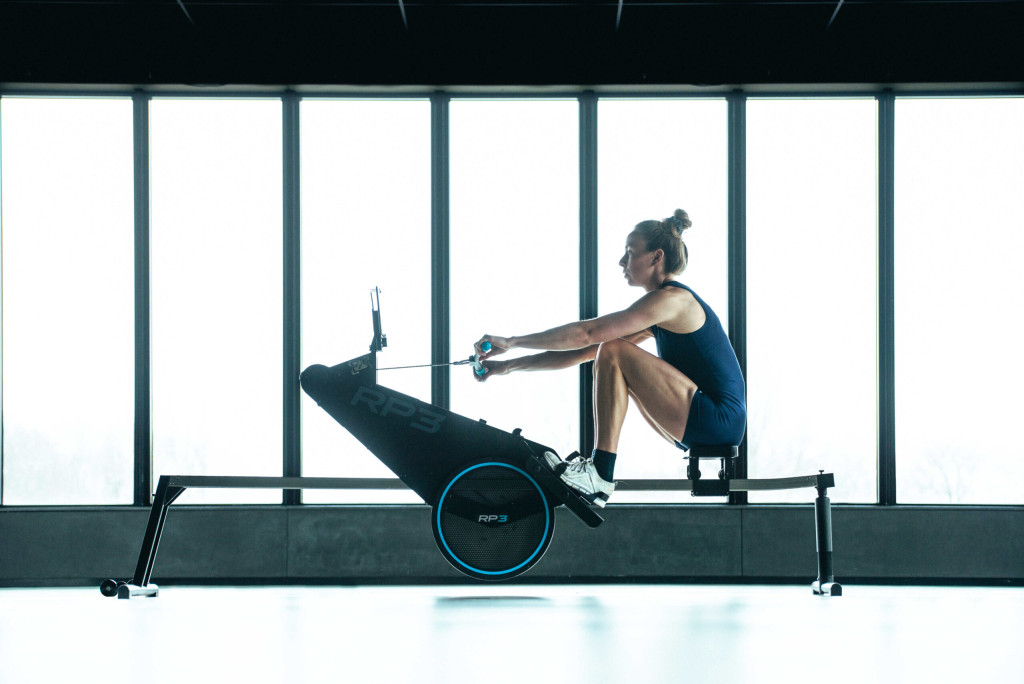Best low-impact cardio options for home
Discover 5 effective low-impact cardio options for home workouts that protect your joints while boosting fitness. Transform your health journey with these sustainable exercises for
When you sit down for a rowing session, you’re engaging in one of the most complete full-body workouts available. But there’s a secret to truly maximising the benefits of each stroke: proper core activation. Many new rowers focus solely on arm and leg power, overlooking the crucial role their midsection plays. A properly engaged core not only improves your rowing efficiency but also protects your back and enhances your overall performance. Whether you’re just starting your fitness journey or looking to refine your technique, understanding how to activate your core can transform your rowing experience. Let’s explore how you can build a strong foundation for better rowing by tapping into your body’s power centre.
The core is quite literally the centre of your rowing power. Think of your body as a chain, with your core serving as the critical link that connects your upper and lower body. When you row, force generated by your legs must transfer efficiently through your trunk to your arms and ultimately to the handle. A properly activated core ensures this power transfer happens smoothly and effectively.
Beyond power transfer, your core muscles work constantly to maintain proper posture throughout the rowing stroke. This stability is essential for preventing the common forward slouch or backward lean that can lead to inefficient rowing and potential challenges like injuries, particularly to your lower back.
Core engagement also helps maintain the timing and sequencing of the rowing stroke. When your midsection is properly tensioned, it creates a solid foundation that allows your limbs to move with greater control and precision. This results in a cleaner, more efficient stroke that maximises your output while minimising wasted energy.
Your rowing core comprises several muscle groups working together to create stability and transfer power. The rectus abdominis (your “six-pack” muscles) works to flex your trunk and prevent excessive arching of your back during the drive phase.
Equally important are your obliques—both internal and external—which run along the sides of your abdomen. These muscles control rotation and side-bending, helping you maintain proper alignment throughout the stroke cycle.
The transverse abdominis, your deepest abdominal muscle, acts like a natural weight belt, creating pressure and stability around your midsection. This muscle is crucial for maintaining a strong, stable position throughout the entire rowing motion.
Don’t forget your lower back muscles (erector spinae) and hip flexors. Your lower back helps maintain an upright posture during the finish position, while your hip flexors assist in the recovery phase as you slide forward for the next stroke.
Your glutes and hamstrings also contribute to core stability, particularly at the catch position when you’re preparing to drive with your legs. This entire network of muscles must work in coordination to create the stable central platform from which all rowing movement originates.
Finding your optimal rowing posture begins in the seated position. Sit tall on the seat with your sitting bones making firm contact. Your spine should be neutral—neither overly arched nor rounded—with your shoulders relaxed and drawn slightly back and down.
To establish proper alignment, imagine a straight line from your ears through your shoulders, hips, and down to the point where you’re seated. This alignment creates the foundation for effective core engagement throughout the stroke.
At the catch position (when you’re closest to the front of the machine), hinge forward from the hips rather than rounding your back. Your shins should be nearly vertical, with a slight forward lean from the hips. Maintain length through your spine, avoiding the common mistake of slouching.
Practice finding this position by doing what we call “rock overs”—shifting your weight forward and back while maintaining a straight spine. This helps develop awareness of proper hip hinging rather than spine flexing.
Before starting your workout, take a moment to activate your core by drawing your navel slightly inward toward your spine. This engages your deep core muscles and creates a stable foundation for your rowing stroke.
During the catch phase, engage your core by drawing your navel slightly inward while maintaining a tall spine. This creates tension in your midsection while preparing to drive with your legs. Breathe in during this preparation phase.
As you transition to the drive phase, maintain core tension while you push powerfully with your legs. Your core acts as a stabiliser, preventing energy leakage between your lower and upper body. Begin exhaling steadily through this phase.
At the finish position, your core helps maintain an upright posture with a slight lean back. Keep your abdominals engaged to support your spine in this extended position, completing your exhale as you reach the finish.
During the recovery phase, your core controls the forward movement of your body. Maintain tension through your midsection as you hinge forward from the hips, keeping your spine long. Use this phase to inhale deeply, preparing for the next stroke.
Throughout all phases, focus on rhythmic breathing that complements your movement. Inhale during recovery and exhale during the drive for optimal oxygen flow and core stability. This breathing pattern enhances your endurance and supports proper core activation.
One of the most prevalent errors is slouching during the stroke. This position disengages your core muscles and places excessive strain on your lower back. Instead, focus on maintaining a tall spine with your shoulders relaxed and back.
Overreaching at the catch position is another common mistake. When you reach too far forward, your lower back tends to round, deactivating your core muscles. Focus on hinging from the hips rather than rounding your spine to maintain core engagement.
Early body swing—opening your torso too soon during the drive phase—reduces leg power and disrupts the proper sequence. Your core should help maintain your forward position while your legs initiate the drive, only opening the torso once the legs are nearly extended.
Insufficient tension through your midsection creates an unstable platform for power transfer. Many rowers focus so intently on leg drive that they forget to maintain proper core activation. Remember that a loose core means lost energy and reduced efficiency.
Holding your breath during exertion is also problematic. This creates excessive pressure and prevents optimal core function. Instead, use controlled breathing that supports your movement patterns and enhances core stability.
The plank is an excellent foundation for building core stability. Hold a forearm plank position for 30-60 seconds, focusing on maintaining a straight line from head to heels. To make it more rowing-specific, try alternating arm lifts while maintaining stability through your midsection.
Dead bugs directly target the deep stabilising muscles that prevent excessive movement during rowing. Lie on your back with arms extended toward the ceiling and knees bent at 90 degrees. Slowly lower one arm overhead while extending the opposite leg, maintaining contact between your lower back and the floor.
Bird dogs enhance the connection between your upper and lower body through your core. From hands and knees, extend your right arm forward while extending your left leg backward. Maintain a neutral spine and switch sides, focusing on stability rather than speed.
Russian twists help develop rotational core strength, which assists with maintaining proper alignment during the rowing stroke. Sit with knees bent and torso leaning back slightly, then rotate your torso from side to side while keeping your spine long.
Incorporate these exercises into your routine 2-3 times weekly for optimal results. As you build strength, you’ll notice improved stability and power transfer during your rowing sessions.
If you’re new to rowing, start by mastering the basic seated position. Sit tall on the rowing machine with your spine neutral and shoulders relaxed. Practice activating your core by gently drawing your navel toward your spine without changing your posture. This foundational awareness is essential before adding movement.
Begin with short rowing intervals at a comfortable pace, focusing on maintaining proper posture rather than speed or distance. Try 1-minute rowing intervals with 30-second rest periods, gradually increasing duration as your endurance improves.
Simplified partial strokes can help develop core awareness. Practice the recovery and catch positions without adding the full drive, focusing on maintaining core engagement during the forward and backward movement of your torso.
As your confidence grows, incorporate the complete stroke while maintaining awareness of your core engagement. Use a mirror if possible to check your posture, or record yourself to review your form.
Remember to progress gradually, allowing your body time to adapt. Consistency is more important than intensity, especially when developing the neuromuscular connections needed for proper core activation.
As with any exercise programme, we recommend consulting with your doctor before beginning, particularly if you have existing back issues or health concerns.
The journey to excellent rowing technique is ongoing, and proper core activation is a fundamental aspect that will enhance both your performance and enjoyment. At RP3 we design our dynamic rowing machines to provide the most realistic rowing experience possible, allowing you to develop proper technique while reducing the risk of injury. By focusing on core engagement during your rowing sessions, you’ll develop a stronger, more efficient stroke that translates to better workouts and improved fitness outcomes.
If you’re interested in learning more about the science of rowing, reach out to our team of experts today.
Discover 5 effective low-impact cardio options for home workouts that protect your joints while boosting fitness. Transform your health journey with these sustainable exercises for
Discover 5 effective low-impact exercises that protect your back while maintaining fitness intensity. Learn proper form techniques to strengthen your spine without risking injury.
Discover 5 effective home workouts that build strength without stressing your joints. Learn fluid movement techniques for pain-free exercise that delivers results while protecting your
Discover effective low-impact fitness strategies that build strength and cardio health without damaging your joints. Learn sustainable workout techniques for long-term health and injury prevention.
Discover 5 effective full-body low-impact workouts perfect for beginners that protect your joints while building strength and fitness. Start your sustainable exercise journey today!
Discover how low-impact fitness creates sustainable health benefits without joint pain. Learn 5 full-body workouts that deliver results while preserving your body for decades of
Discover why low-impact workouts deliver powerful fitness results without joint damage. Learn 6 key benefits and find the perfect exercise for sustainable daily fitness that
Discover why low-impact training on recovery days accelerates muscle repair, prevents injuries, and boosts long-term fitness gains. Learn optimal activities and avoid common recovery mistakes.
Discover why rowing machines deliver a complete workout while protecting your joints. Engage 85% of your muscles with zero impact stress—perfect for fitness enthusiasts of
Discover effective low-impact exercises perfect for returning to fitness after breaks or injuries. Learn 5 joint-friendly workouts that rebuild strength while preventing setbacks on your
Discover 5 low-impact routines that challenge your entire body without stressing your joints. Build strength and burn calories while protecting your knees, hips, and spine.
Discover how rowing uniquely engages 85% of your muscles while enhancing flexibility in one efficient workout. Build strength and mobility simultaneously without stressing your joints.
Discover how consistent low-impact activity delivers powerful physical and mental benefits without joint stress. Build fitness, reduce stress, and improve mobility through sustainable daily movement
Discover why rowing machines offer the ultimate low-impact, full-body workout for home fitness. Get 85% muscle engagement with minimal joint stress—perfect for all ages and
Discover how low-impact exercise protects your joints while delivering powerful fitness results. Learn 5 joint-friendly workouts that maintain mobility and prevent pain as you age.
Discover how to build sustainable low-impact fitness habits that protect your joints while delivering exceptional results. Learn proven strategies for lifelong exercise consistency without pain.

We will send you a personal quote as soon as possible.
As soon as the quote is ready, you will receive a link by email to order directly.
